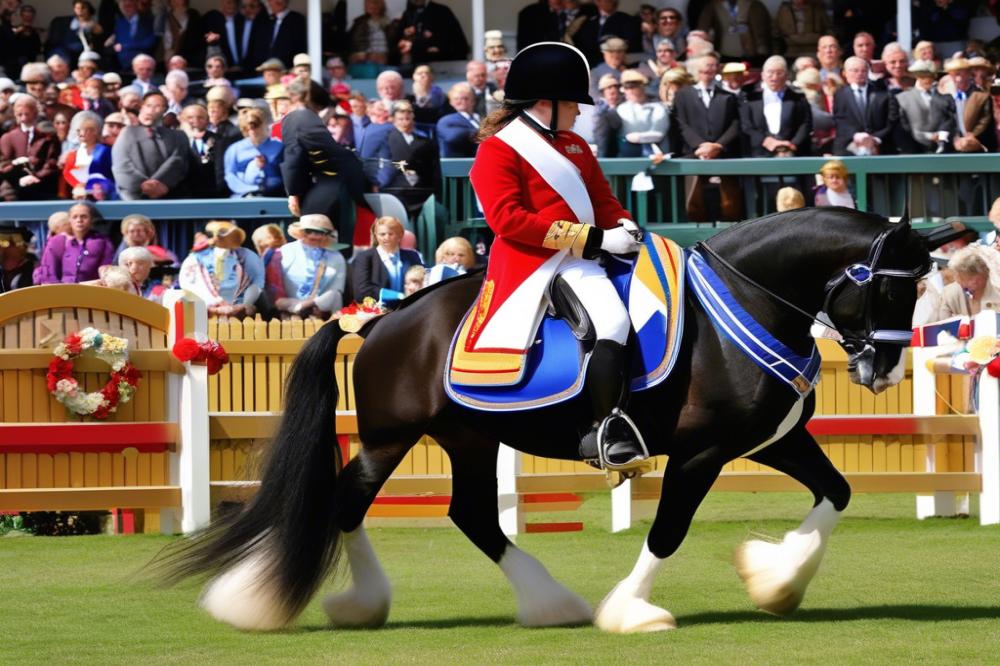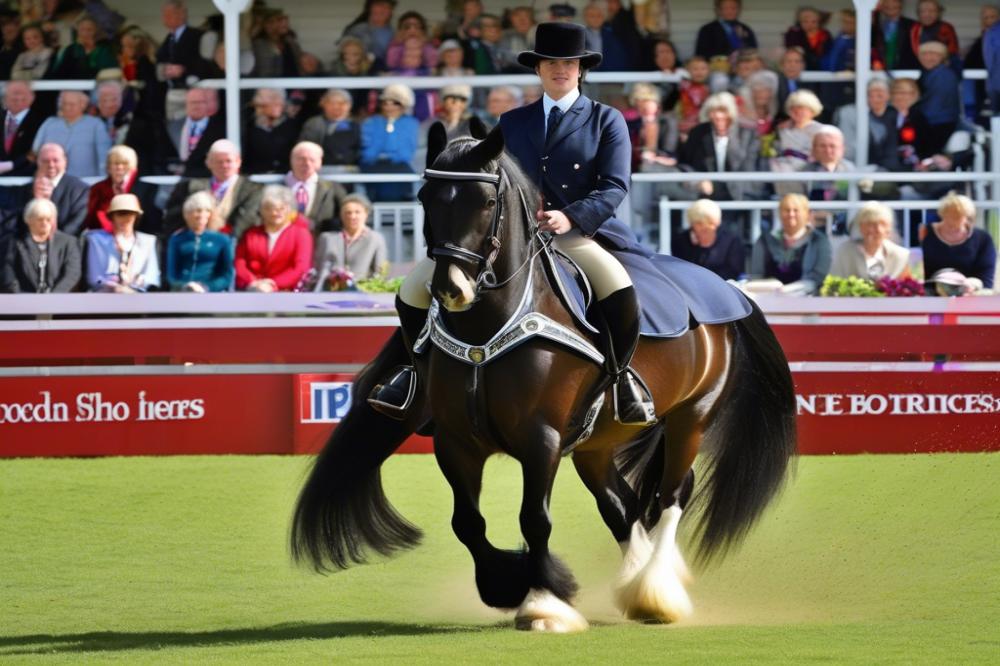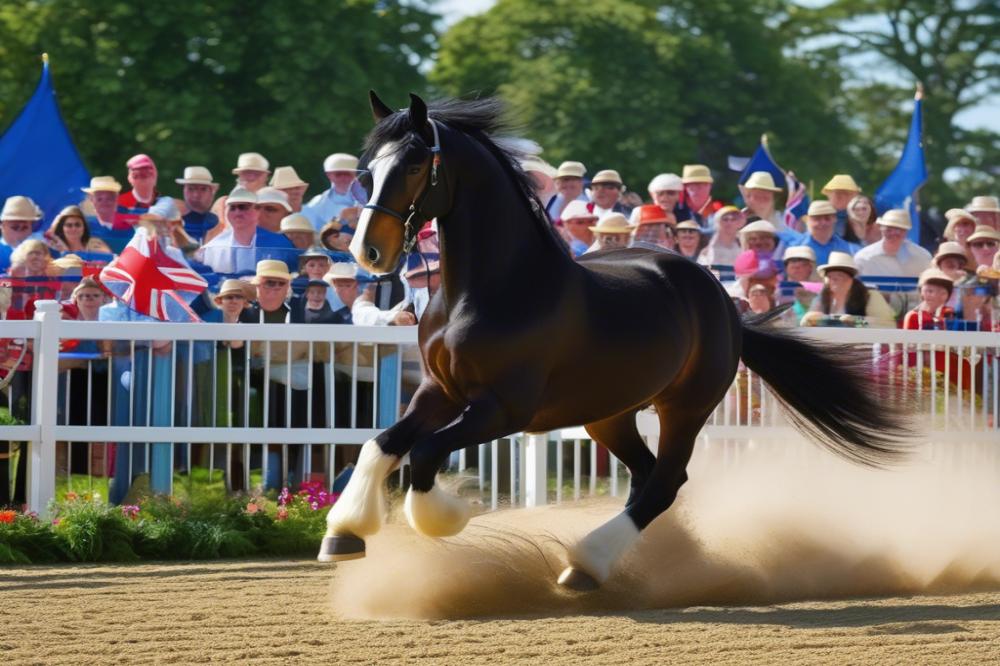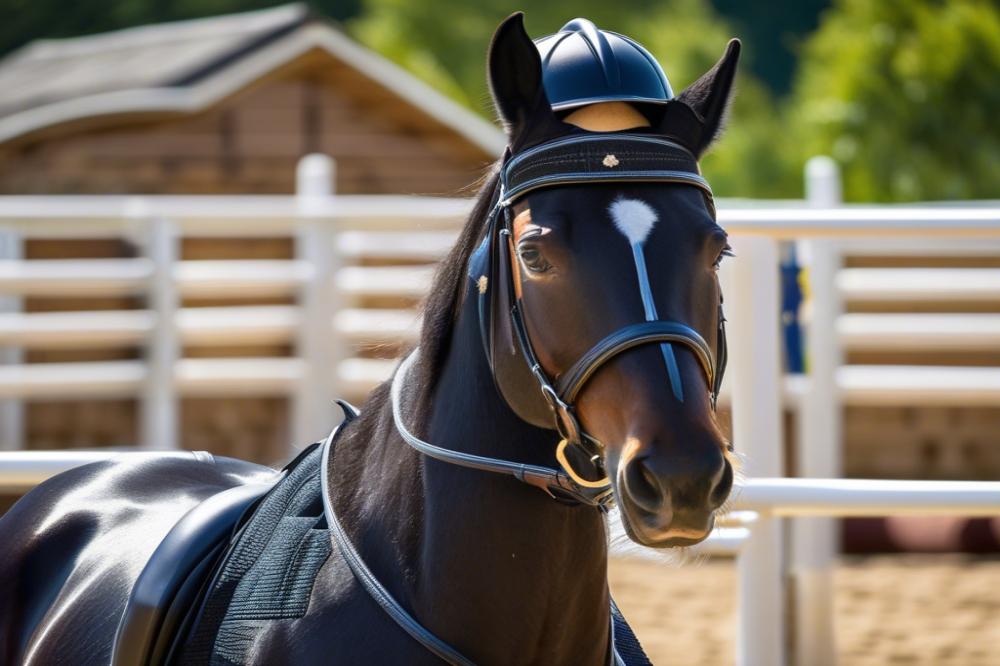Staying Secure While Riding a Shire Horse in Competitions
Shire horse competitions are exciting events that showcase the strength and grace of these impressive animals. Competitors need to display their skills with confidence while navigating various challenges. Riders must prepare thoroughly to excel in these events. Safety is key to enjoying this unique experience. Knowing how to keep secure while riding can make all the difference.
Importance of security cannot be overstated. Riders face risks every time they saddle up. Things can go wrong in the blink of an eye, but with the right precautions, many of these issues can be minimized. Whether galloping through an obstacle course or performing in front of judges, staying alert is essential. Additionally, a rider must understand their horse’s behavior and body language. This connection can prevent accidents before they happen.
horse riding safety involves several key components. First, appropriate gear is crucial. A well-fitted helmet is non-negotiable. Boots should provide support and grip to help maintain balance. Assessing tack regularly helps ensure it is correct and in good condition. Second, training is vital. Both horse and rider should practice together to build a strong bond. Finally, having a responsible support team can increase overall security. Friends or coaches can offer guidance and encouragement during competitions.
Understanding Shire Horse Behavior

Common traits of Shire horses
Shire horses are known for their calm and gentle nature. These large creatures are typically friendly and easygoing. Many have a great tolerance for various environments. Their size can be impressive, but they are often more relaxed than one might expect. In social situations, they tend to be welcoming to both humans and other horses. This temperament makes them popular in many activities, including competitions.
How horse behavior impacts competitions
Every aspect of a horse’s behavior can affect its performance in events. A Shire’s responsiveness to its rider plays a big role in success. When a horse is calm, it can focus better. Conversely, a restless Shire may struggle with commands and precision. Understanding these behaviors can lead to better teamwork. Communication becomes essential in competitions as well. Riders must adapt to how their horse is feeling to maintain harmony.
Recognizing signs of anxiety or stress
Identifying stress in horses is crucial for both safety and performance. A Shire may show signs of anxiety through behaviors such as foot-stamping or excessive shifting. Nervous whinnying can indicate discomfort in certain situations. Observing changes in eating or drinking habits is also important. When a horse appears tense, it’s vital to assess the environment. If a Shire stands rigid with its ears pinned back, it may be feeling overwhelmed. Addressing these signs early can help maintain a better atmosphere for competition.
Essential riding gear and safety equipment

Recommended riding gear for Shire horse competitions
Wearing the right riding gear can make a big difference. A quality saddle is essential for controlling a large horse like a Shire. This breed, known for its strength, needs a secure fit for both rider and horse. Breeches offer comfort and grip, making them an important choice for any competitor. Choose boots with a sturdy heel to give you the necessary support. Gloves add grip and comfort during long rides, helping to manage the reins with ease.
Importance of Helmets and Protective Wear
Helmets should always be worn while riding. Protecting your head is crucial, especially in competition settings. Regulations often require them, but aside from rules, they can save lives. Alongside helmets, body protectors are another safety measure worth considering. They are not just for showjumping; any rider can benefit from the added layer of protection. However, it’s important to choose equipment that is certified for safety standards.
Selecting Appropriate Tack for Safety and Comfort
Quality tack is critical for both safety and comfort. A well-fitted bridle ensures that the horse is comfortable and responsive. Leather or synthetic materials both have their advantages; choose what feels best for you. Ensure that the bits used are suitable for the horse’s mouth. The saddle must not only fit the rider but also the horse perfectly. Finally, remember that proper girth and saddle pad can reduce the risk of injury to your horse’s skin and muscles. Each piece of equipment plays a role in the overall performance and safety during the event.
Rider Skills and Techniques for Balance

Riding a Shire horse in competitions presents its own set of challenges. Sturdy and tall, these horses provide both beauty and power. However, riders must maintain proper balance when mounted to navigate various tasks smoothly. Rider stability is crucial for performance and safety during events.
One effective technique for maintaining balance is focusing on your core muscles. Engaging these muscles helps keep your body centered. A strong core aids in absorbing any movements from the horse. Using your legs to grip the horse with a soft touch can also enhance stability. This method creates a secure connection between rider and steed.
Another key aspect involves your position in the saddle. Riding with a straight back and relaxed shoulders contributes significantly to balance. Look ahead and keep your gaze focused, as this helps you stay aligned. As the Shire moves, adapt your weight accordingly. A slight shift in your body can counteract the horse’s natural motions.
Practicing proper mounting is essential. Approach the horse calmly, using a mounting block if necessary. Place your left foot in the stirrup and swing your right leg over smoothly. Sit down gently to avoid jarring yourself or the horse. This careful method sets the stage for a safe ride.
Dismounting also requires attention. Always lower yourself slowly, placing one foot in the stirrup first. Swing your leg over, then step down carefully. Avoid jumping off, as this can startle your horse. A gentle dismount ensures both rider and horse remain calm and secure.
Riders should consider regular practice sessions that emphasize balance and stability. Drilling basic movements helps develop muscle memory. Incorporate exercises that challenge your center of gravity. For instance, try riding in different positions, like standing briefly in the stirrups. This will build confidence and improve your riding skills.
Injury Prevention and Emergency Preparedness
Common injuries in equestrian sports
Equestrian sports can lead to several injuries. Riders often face falls, which can result in sprains, fractures, and abrasions. Injuries to the knees and ankles frequently occur. Additionally, muscle strains in the back or shoulders are common due to the physical demands of controlling large animals like Shire horses. Understanding these risks is crucial for every rider.
Strategies for injury prevention during competitions
Preventing injuries starts long before the actual competition. Proper warm-up exercises are essential. Stretching not only prepares muscles but also enhances flexibility. Always wear suitable attire, including properly fitting helmets and boots designed for riding. Check the condition of tack and equipment to prevent accidents caused by malfunctions. Staying aware of the horse’s behavior helps too. Calm horses are generally safer.
Practicing regular riding can build balance and strength. Take lessons from experienced instructors for guidance on safe riding techniques. Also, consider participating in groundwork. It builds trust between rider and horse, leading to improved communication during competitions.
Understanding competition guidelines to mitigate risks
Every competition has specific rules to follow. Familiarize yourself with these guidelines before participating. Knowing the timeline of events can help in organizing warm-ups and practice runs effectively. Coaches often provide valuable insights into what to expect. Adhering to the outlined safety protocols can significantly reduce the likelihood of accidents.
Reviewing the layout of the competition arena aids in anticipating any potential hazards. Awareness of environmental factors, such as weather conditions, is also important for preparation. Seek out training sessions that cover emergency procedures, so you know how to respond if something goes wrong. Ensuring that all participants are briefed about safety measures fosters a culture of vigilance during competitions.
Following Rules and Regulations in Competitions
Understanding the rules specific to Shire horse competitions is crucial. Each event may have its own set of guidelines that must be followed. These rules are designed to promote safety and fairness. They often include regulations about proper tack, attire, and performance standards. Familiarity with these can enhance both your performance and your safety.
Adhering to competition guidelines is important for several reasons. A clear understanding of the rules helps prevent disqualification. It also fosters a level playing field for all competitors. Additionally, these regulations are in place to protect the health and well-being of the horse. Ignoring them can lead to dangerous situations, for both horse and rider.
Staying informed about changing regulations takes effort. Regularly check the official websites of the governing bodies for updates. Engaging with fellow competitors can also keep you in the loop. Joining forums or social media groups related to Shire horses can provide valuable insights. Many organizations send newsletters to their members, which can be a great resource to catch any changes.
Consider attending seminars or workshops hosted by equine professionals. These opportunities often cover updates in rules and best practices. Finally, always review the rulebook before heading to a competition. This simple step can help solidify your understanding and prepare you for the event.
Trail Riding Tips for Competitions
How Trail Riding Helps Prepare for Competitions
Trail riding is more than just a leisurely escape into nature. It plays a key role in preparing both rider and horse for competitions. Engaging with different terrains builds muscle and endurance. Familiarity with varied paths gives horses experience with obstacles. This exposure can be essential on competition day, where unexpected challenges could arise.
Techniques for Riding Safely in Diverse Environments
When trail riding, it is important to prioritize safety. Always check your gear before heading out. A well-fitting saddle and secure bridle can prevent issues. Consider riding with a buddy, especially in unfamiliar areas. Using a helmet is a must, as it provides vital head protection. Be aware of your surroundings; watch for other riders and wildlife. Taking breaks can also help both horse and rider stay focused.
Building Confidence Through Varied Riding Experiences
Riding in different environments boosts confidence immensely. Experiencing various terrains, like hills or rivers, prepares riders for competition settings. Each unique trail presents its own challenges and this helps in developing problem-solving skills. Riding in open fields can teach horses to handle space. Tight locations help focus on precision and control. When individuals face different situations, they grow more adaptable.
Final Thoughts on Safety and Enjoyment in Equestrian Sports
Recapping key safety strategies will help every rider feel more secure. Always wear appropriate riding gear to protect yourself during competitions. Additionally, familiarize yourself with your Shire horse before performing. Understanding its temperament and behavior can make a significant difference. Remember to consistently check your safety equipment. This will keep you and your horse safe during competitions.
Practicing safe riding techniques should be a priority. Regular training helps develop confidence in both you and your horse. Strength and balance can improve your overall performance. Positioning yourself correctly in the saddle allows for better control. With practice, instinctive reactions become second nature.
Enjoying your time in the saddle is just as important as safety. Equestrian sports can be a source of joy and achievement. After all, riding a Shire horse in competitions can be an unforgettable experience. So, embrace the thrill, cherish the moments, and ride with confidence. Strive for both safety and excellence, and you will find success in the ring.



